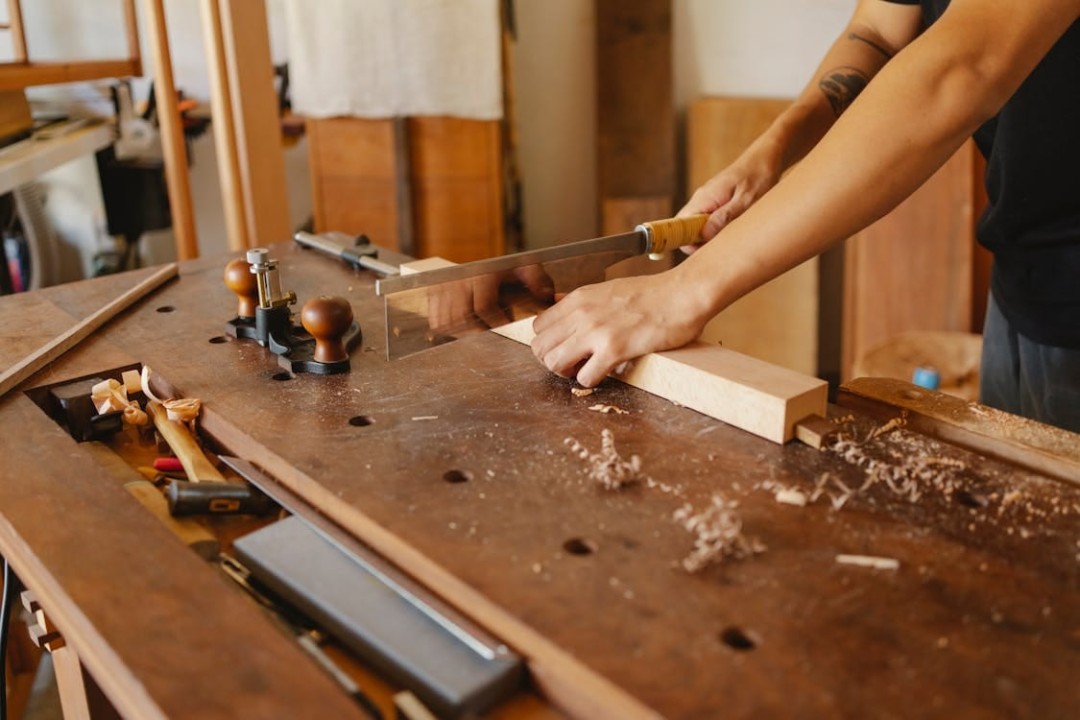
Legacy Handcraft, a name rooted in quality woodworking, is bringing back time-honored furniture-making methods to help homeowners preserve the beauty of their spaces. The company believes that restoring architectural detail isn’t just about repairing what’s old—it’s about honoring the character and history of a home.
Whether you’ve bought a brand new place or are simply renovating your existing home, the style of the property usually influences your interior design plans.
So, if your space has unique architectural features, make the most out of them by using traditional techniques when approaching your furnishings, just like Legacy Handcraft does.
Examples of Traditional Techniques Used by Legacy Handcraft
To celebrate the specific style of your property, flat-pack furniture and shelving units just won’t cut it. But what do you go for instead, and what are the traditional techniques needed to recreate a truly special interior? Here are a few examples to get you inspired.
1. Using Hand Tools
Whilst making furniture and shelving units with the help of power tools and other machinery can speed up the job, traditional methods have their own advantages. Hand tools allow the craftsperson more control over how they manipulate the material. From carving out intricate designs to cutting wood to exact measurements, this can all be achieved using hand tools.
Examples of commonly used hand tools include:
- Chisels
- Planes
- Saws
- Hand drills
2. Joinery vs. Nails/Screws
A quick and easy way to assess the quality of a piece of furniture is to look at how it is constructed. Nowadays, many mass-produced flat-pack furniture kits are fixed in place using screws and nails. Historically, wooden structures were held together using artfully designed joints. Let’s take a look at the most well-known types of joints.
Butt Joint - This is the simplest type of joint, consisting of two pieces of wood butted one against the other at a 90 degree angle.
Box Joint - More complicated and stronger than the butt joint, the box joint involves cutting interlocking fingers into each side of the wood. These then slot together tightly to hold the structure in place.
Dovetail - Similarly to the box joint, the dovetail joint also has these finger-like projections. Only, this time they are cut at an angle and fan out like tails. Dovetail joints are used in high-quality pieces for the decorative effect.
Mortise and Tenon Joint - Another hard-wearing joint, the mortise and tenon joint also relies on the interlocking method. The tenon-shaped rectangle from one side slots into the empty mortise space on the other, connecting the two pieces of wood together.
Miter Joint - This is an angled joint that requires the ends of the two pieces of wood to be cut at a precise 45 degrees. The miter joint is used for its clean appearance and is often incorporated into frames and other items where the joints are on display.
3. Quality Materials
One of the most important ingredients when producing handmade shelving and furniture is the materials used. Even an amateur can spot the difference between high-quality walnut and mahogany and cheap MDF. Impressive hardwoods and versatile softwoods not only add a sense of prestige to your interior design but also outlast flimsy flat-pack furniture.
4. Finest Finishes
With 100% natural wood materials, there is no need to cover the surface with veneers and other coatings. Waxes and oils are rubbed into the surface to bring out the shine and colour of each type of wood. A coat of varnish can also help protect the wood while retaining its authenticity.
5. Bespoke Design
In the past, the objects we used every day were not mass-produced on the scale they are today. It was not uncommon to have furniture pieces and shelving designed and made specifically to suit a particular purpose, style preference, and space.
Traditional techniques are not just employed in the making process, but also when drawing up the designs. At this stage, craftspeople will decide which approach to take, the tools to use, and perhaps test out a few techniques. It’s not just a case of sending measurements to a machine.
How Traditional Techniques Help Restore Architectural Detail
It’s not just about being stuck in the old ways of doing things. Keeping traditional techniques alive by incorporating them into our homes restores fading architectural details at risk of being lost to modernity. What’s more, it’s these unique details that add not only character but value when you sell your property.
Putting your property in the hands of the wrong people, cowboy builders and non-professionals, may disregard these details, plastering over them with passing trends and using low-quality materials. Houses with original beams and brickwork are in danger of being modernised and having their unique appeal erased. The same goes for furnishings, kitchen units, and shelving.
It’s up to the homeowner to appreciate the finer architectural details within their property and call upon craftspeople, such as Legacy Handcraft, who can really bring these features back to life. By approaching your joinery projects using traditional techniques, you are helping preserve pieces of history within your home.
About Legacy Handcraft
Legacy Handcraft is a Pennsylvania-based maker of finely crafted furniture and architectural pieces, created with care by skilled Amish artisans. The company blends time-honored woodworking techniques with thoughtful design to produce items like Murphy beds, mantels, and shelving that honor the character of every home. Each piece is built with quality materials and attention to detail, making sure the craftsmanship lasts for generations.
Media Contact
Company Name: Sean Rodgers
Contact Person: Legacy Handcraft
Email:Send Email
Address:704 Main Street
City: Akron
State: Pennsylvania 17501
Country: United States
Website: https://legacyhandcraft.com/
